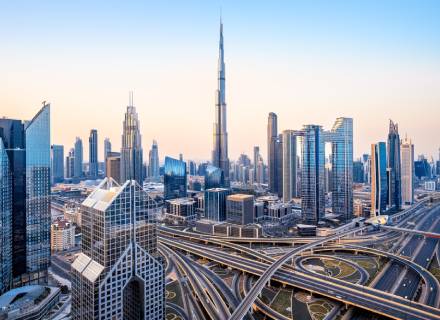Nobody could have predicted thirty years ago that a tiny town in the desert would grow into a massive, futuristic metropolis that draws millions of visitors and investors annually.
The city has a history of implementing bold, futuristic ideas and is not afraid to take on ambitious projects.
The following are some of the ways the city demonstrates its resolve to lead the way in metropolitan development:
World’s Largest Airport
The largest airport in the world, Al Maktoum International (AMI), is located in Dubai, a city known for its brightly lit skyscrapers and busy streets.
On April 28, the airport announced the second phase of its expansion. It will be five times larger than Dubai International Airport (DXB) when it is finished.
AMI can handle up to 260 million passengers annually once it is fully operational, which will only serve to increase the city’s tourism even further.
Passengers are in for a treat, because the airport will be using technologies never seen in the aviation industry before.
The new airport will cover 70 square kilometres. More than 400 aircraft gates will be housed in five passenger terminals, which will have five parallel runways. It is anticipated that all DXB operations will progressively move to AMI within ten years.
Faster Travel On The Tracks
Residents of Dubai enjoy taking trips outside of the city, particularly on public holidays.
Travel between the Emirates will now be quicker and easier thanks to the nearly completed construction of the much awaited Etihad Rail passenger train.
The passenger train will make travel easier and more comfortable for locals by connecting 11 cities and regions throughout the United Arab Emirates.
It will pass through Al Sila and Fujairah, including Al Ruwais, Al Mirfa, Sharjah, and Al Dhaid, as well as Dubai and Abu Dhabi.
The UAE’s National Rail Network is now complete and in use for commercial purposes, according to the Etihad Rail website.
Flying Taxis To Shorten Abu Dhabi-Dubai Travel Time
It never occurred to anyone that flying cars would exist outside of science fiction. But Dubai has a remarkable ability to make the fantastical become real.
Soon, flying taxis will be accessible, reducing the duration of the trip from Abu Dhabi to Dubai to just thirty minutes.
Air taxi operations are anticipated to begin by 2025 or early 2026, according to Joby Aviation, a US-based company that develops electric vertical takeoff and landing (eVTOL) aircraft for commercial passenger service.
The 20-Minute City
With the help of this initiative, residents can travel throughout the city in sustainable ways by bicycle, foot, and transportation, and can arrive at their destinations in under 20 minutes.
According to the Dubai 2040 Urban Master Plan, 55% of the population lives 800 meters or less from a mass transit station, making it possible for them to get to 80% of their daily needs and destinations.
In the meantime, Dubai’s Roads and Transport Authority (RTA) revised its 2024–2030 strategic plan to account for non-driving commuters.
The goal of the RTA plan is to encourage the construction of transportation infrastructure and roads that will improve living in the 20-minute city.

